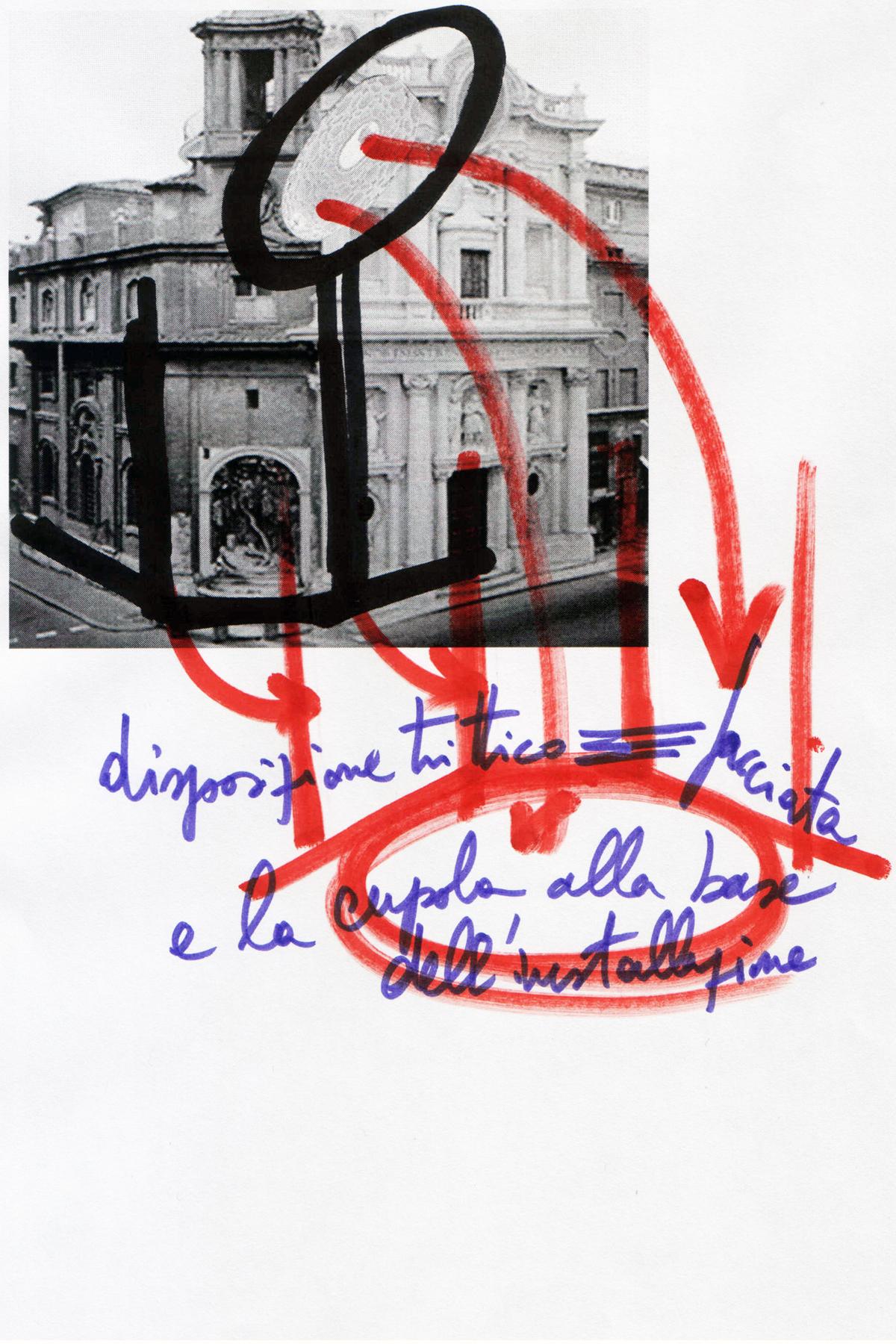Hypothesis of a New Italian Renaissance does not launch any utopic challenge to the future; the artist avoids conceited announcements. The title refers to hidden energies, sentimental aspirations, intense looks of the inner eye. It is an ethical step within the needs of our time, a return to the excellent origins of the early modern age. Pennacchi favours experienced and well-worn matters, the genetic memory of consumption, the experience layered around things. An art which feeds on healed rifts: gestural violence and its stopping by dense prints, archaic materials diving into the acid fury of industrial colours, the filth of the experienced and its iconographic rebuilding. The hypothesis of a New Renaissance involves the search for a dialogue between work and observer, the secular sense of open communication, the liberating catharsis of the icon, the density of messages through persistent and watchful images.
The installation arrangement emphasises another aspect which is essential for the artist, namely the dramatic dimension of the figurative system. The lesson is that taught by Jannis Kounellis, Christian Boltanski, Anselm Kiefer, Edward Kienholz, Paul McCarthy, Mike Kelley, craftsmen of involuntary wings and stages for human habitation, authors of multi-layered installations acting as the acid heart of a never-buried classical theatre. Pennacchi is driven towards the use of the matter, manipulating its lovely wastes without any building reticence, manoeuvring them around the matter projection of Saint Charles's plan.
The crucifixion establishes a precise wavelength, shared by Borromini's church. Whereas the convex and wrapping metre represents a very distinctive feature, less evident is the link between chromatic areas, which turn into flesh and blood, pain and passion, thus echoing the symbolism evoked by the 17th century. Add to this the wrong-footing effect of the acid colour, which acts both as a natural short circuit of our time and as an architectural counterbalance including the eternal dynamism of flow. And then there are the “three pilgrims”, sitting on a hassock, completing the short circuit between contemporary age and memory: there they are, silent and wrong-footing, privileged observers on the way of a tragic dimension which is somehow resembling the comical.
At the heart of the journey there is the Man, a leonardesque figure reading and interpreting the world's indefinable geometric designs. A picture reminds us of this concept along the road to the Crucifixion: ultimate awareness of the constant and resilient presence of man around the events, as creator and destroyer of dreams, mechanist of shapes and alchemist of life, sculptor of what is true and of what is false, obsessive observer of the extreme point.







Comments 0
Say something